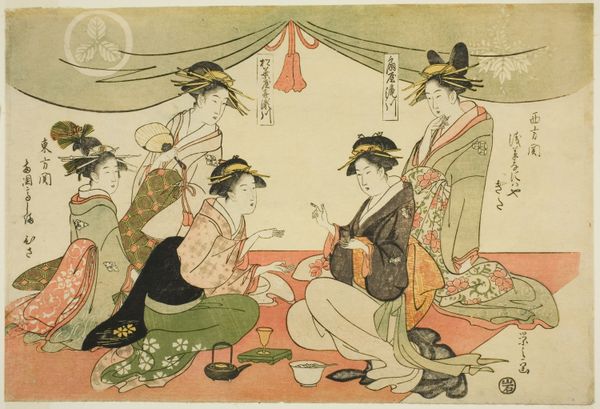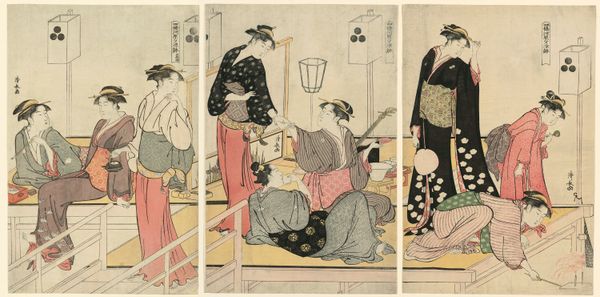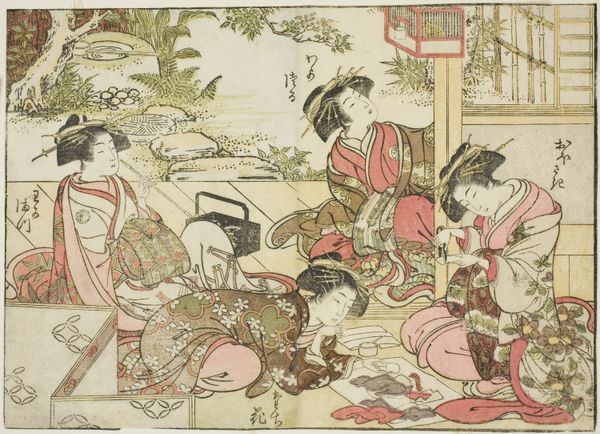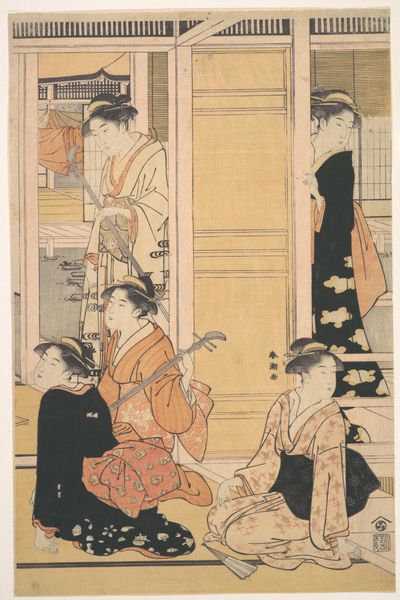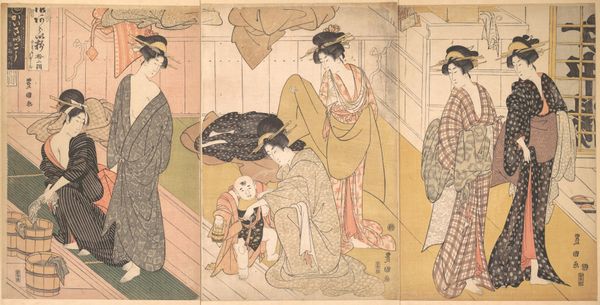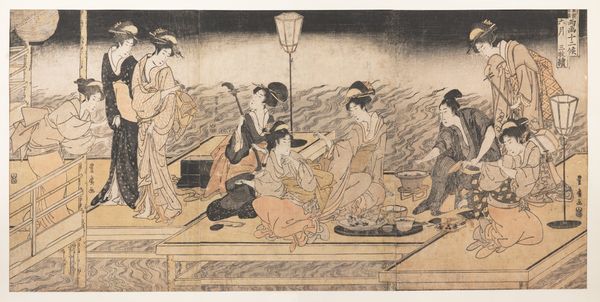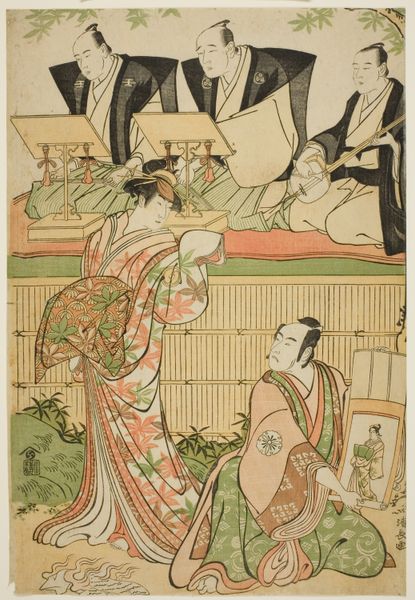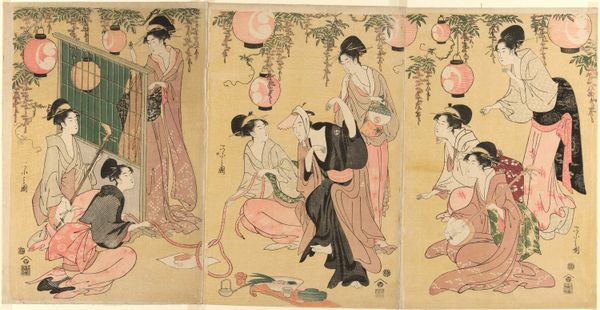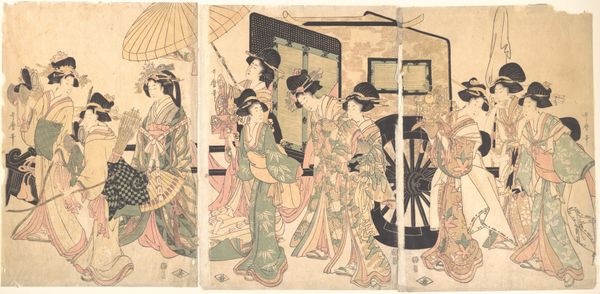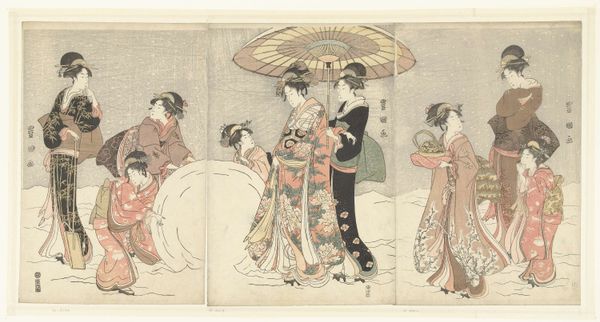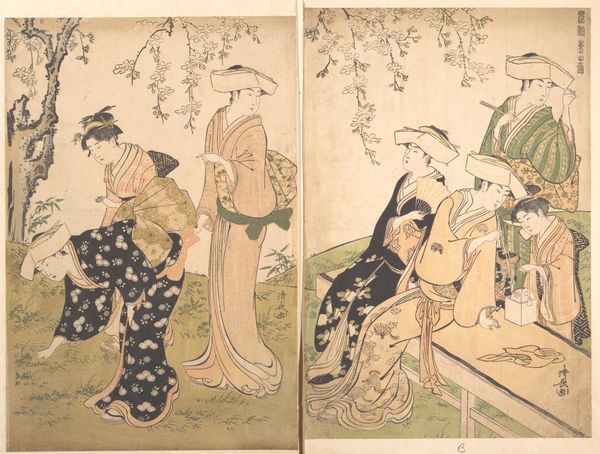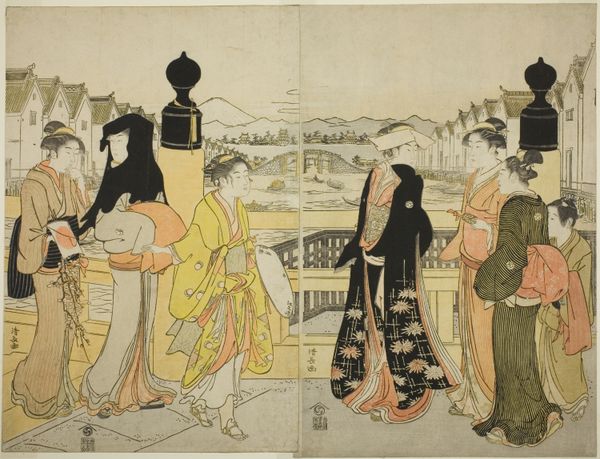
Entertainers of Nakazu, from the series "A Collection of Contemporary Beauties of the Pleasure Quarters (Tosei yuri bijin awase)" c. 1784
0:00
0:00
#
portrait
#
water colours
#
ink painting
# print
#
asian-art
#
ukiyo-e
#
japan
#
figuration
Dimensions: 38.8 × 25.8 cm (right sheet); 39.0 × 25.5 cm (left sheet)
Copyright: Public Domain
Editor: Here we have Torii Kiyonaga’s "Entertainers of Nakazu," a color woodblock print from around 1784. The composition is divided into two panels, depicting a lively gathering. There's a definite sense of dynamic interaction within a carefully organized space. How do you approach understanding a print like this from a formalist perspective? Curator: My focus immediately turns to the intrinsic elements: line, color, and form. Notice how Kiyonaga uses line to define the figures, particularly the flowing lines of their robes. The colors are muted, primarily soft creams, pinks, and blacks, creating a harmonious yet somewhat reserved palette. How do the arrangement and repetition of those formal properties inform your experience? Editor: I see what you mean. The repetition in the patterns of the kimonos creates rhythm, and the limited color palette really unifies the two scenes. Curator: Precisely. Consider how the verticality of the lanterns contrasts with the horizontality of the figures seated on the floor. This interplay generates a visual tension. Semiotically, the lines themselves become signs—markers for visual structures that build cohesion. Editor: So, instead of thinking about the scene depicted as an insight to culture, you’re considering the structure first? Curator: The structure informs its potential as an effective scene; for the cultural components to resonate. Can we see the ways in which those structures create layers within the artwork? Where does your gaze rest, and why? Editor: I think my eyes are drawn up and down the prints. They don’t rest easily; the structure makes sure of that. The details, especially the placement of objects, creates visual complexity. Thank you, this was very enlightening.
Comments
No comments
Be the first to comment and join the conversation on the ultimate creative platform.


